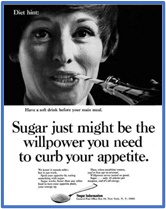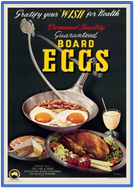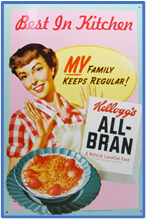
MEAT CHAPTER
The local butcher shop has a sign that says, “Either you love bacon or you are wrong.” If only it were that simple. Meat has received praise for being an excellent source of iron and protein, while being panned for potentially increasing your risk of cancer. Beyond the health questions, there are questions of ethics and the environment. Is it okay to eat animals? But when you start examining nutrition research and the conclusions, especially with regard to meat, it quickly becomes obvious that scientists might be bringing their morals to the dinner table.
FISH CHAPTER
How many times have you heard that fish is brain food? The omega-3 fatty acids in fish such as DHA (Docosahexaenoic acid) and EPA (Eicosapentaenoic acid) are supposed to be good for your brain and your heart. Toss in the fact that fish — and seafood in general — is considered an important source of vitamins A, D and E, and it seems obvious that fish should be a healthy choice. In fact, approximately 80% of people agree or strongly agree that fish is healthy. But as we’ve seen, not all nutrition beliefs or assumptions are true; we need to look closely at the best available evidence. It is far more important to know if fish is actually healthy based on the best available science than just listing what is in it and assuming that it will be healthy.


SUGAR CHAPTER
For decades, we avoided fat. We chose margarine instead of butter, skim milk instead of cream, all in the name of science that, as it turned out, really wasn’t all that solid. Now it’s sugar’s turn. Mary Poppins used to tell us a spoonful of sugar helps the medicine go down but now, as we did to fat, we’re doing it to sugar: demonizing it. But as always, does the evidence support the rhetoric?
DAIRY CHAPTER
Milk. It does a body good. Have you heard that slogan? Back in the 1980s, U.S. dairy farmers wanted to increase sales. The National Dairy Board created a charming television ad campaign that showed children smiling and playing while chanting, “Milk. It does a body good.” Other ads showed children growing up right before the audience’s eyes, as they talked about how the ever-present glass of milk in their hands made their muscles big and their teeth and hair strong. Numerous ad campaigns over the years have planted plenty of ideas about the benefits of drinking milk. In addition, since the 1940s up until 2019, dairy in one shape or another has made it into the guidelines every time, whether as milk, milk products, or more recently, dairy


MEDITERRANEAN DIET CHAPTER
Picture this: a small group of family and friends sit at a quaint, out of-the-way restaurant overlooking the Mediterranean Sea. Everyone is laughing and having fun, all the while dipping focaccia bread into olive oil and vinegar, eating Greek salad with plenty of olives, enjoying a delicious paella containing an abundance of fresh seafood, and then topping it off at the end with gelato or baklava — and most importantly, drinking wine throughout. What an alluring picture of the Mediterranean diet. What’s more, there’s actually some evidence this way of eating will reduce your risk of strokes and in some populations, heart attacks. No wonder the Mediterranean diet makes it onto almost every “top 10” diet list, often coming in at number one.
EGGS CHAPTER
Eggs contain high levels of protein, vitamins, and omega-3 fatty acids; therefore, they must be good for you. Eggs are high in cholesterol and saturated fat; therefore, they must be bad for you. The simple egg constantly finds itself caught up in a world of controversy, with people throwing around claims such as, “eggs for nutrition are hard to beat,” and — here’s a doozy — “eggs are nearly as bad as cigarettes.” How did we reach the point where eggs are dished up alongside one of the most harmful things we can do to our bodies?


ALCOHOL CHAPTER
“To alcohol: the cause of, and solution to, all of life’s problems.”
-Homer Simpson, Season 8, Episode 18
“The dose makes the poison.”
Paraphrased, Paracelsus, Swiss medical pioneer, 1500s
If you’re looking for wisdom, you can find it in just about any of The Simpson’s episodes, and Homer was never righter than when he lifted his beer mug to toast alcohol. While you can blame or thank alcohol for its impact on your life, you can be confident that doing many nutrition things to excess, especially drinking will lead to problems. As an earlier physician/philosopher, Paracelsus, declared, too much of anything is a bad thing. Even drinking too much water can kill you.
FIBRE CHAPTER
“Kellogg’s BRAN solves constipation worries because it is ALL-BRAN!” Since it introduced bran flakes in 1915, Kellogg’s has been trumpeting the value of bran— the hard outer layer of grains such as wheat and oats. Other cereal companies have jumped on the “happy bowel” bandwagon, telling us we’re not eating enough fibre, and that one of the best sources is that bowl of bran on the breakfast table. It’s tempting to believe them, since it can be awkward to talk about “being regular.” It’s so awkward that we use code words such as “being regular”! But are the cereal companies right? Can fibre fix you up? And what about the claims that fibre fights heart disease and cancer? Let’s define fibre and then dig into the evidence.


WEIGHT CHAPTER
Chocolate is good; chocolate is bad. Wine is heart-healthy; alcohol will kill you. I thought the headlines about specific foods were overwhelming. But then I glanced at the magazines on display at the supermarket.
“Lose weight without feeling hungry!”
“Belly buster diets that really work”
“Lose 5 lbs in seven days”
There’s no doubt we’re immersed in a weight-obsessed culture. But are there health reasons to worry about weight? What does the evidence say about how carrying some extra pounds can affect your health? And if you do want to lighten up, will this or that diet actually work? The magazines promise answers to questions such as whether low carb is better than low fat, or whether one diet will melt the pounds quicker than another. I’m happy to say there is decent evidence that compares different diets and their effect on weight. But first: what’s a healthy weight?
FOOD INTOLERANCE CHAPTER
Heart attacks, cancer, death. These are some of the big health issues, the “meat and potatoes” that this book focuses. But there are a lot of other potential issues that people deal with every day, and food may sometimes be the cause. So, in this chapter, I want to discuss the importance of allergies and food intolerances. They can lead to a myriad of symptoms. These often involve your breathing (sneezing, wheezing, shortness of breath), skin (rashes, itching) head (confusion, headaches, dizziness), joints (pain, stiffness), and stomach and bowels (nausea, bloating, diarrhea). Many people spend lots of time tinkering with their diets, trying to find a “fix” for these symptoms. And no wonder when you can’t walk by a newsstand without seeing this sort of headline on dozens of magazines and covers: “Is (insert any food item – dairy, wheat, caffeine) causing your (insert any symptom – stomach upset, joint pain, itching, headache, rectal pain) woes? Here’s how to fix it!”


ULTRA-PROCESSED FOOD CHAPTER
An apple a day keeps the doctor away. An old adage but as far as I know, there’s no real research to back that statement up. However, it’s hard to see how picking an apple directly from the tree (you can’t get more unprocessed than that) could hurt, unless it’s covered in pesticide, when you bite into it. But what about all that packaged food on the grocery store shelf. How many ingredients went into it? What magic of chemistry went into the goal to make it sit on the shelf for months and still be tasty when you eventually eat it? Varied terminology and opinions abound around the topic of processed food – but when you think about it, almost all food is processed to some degree. In this chapter I look specifically at “ultra-processed” food and whether it deserves its reputation as being unhealthy or even dangerous.
